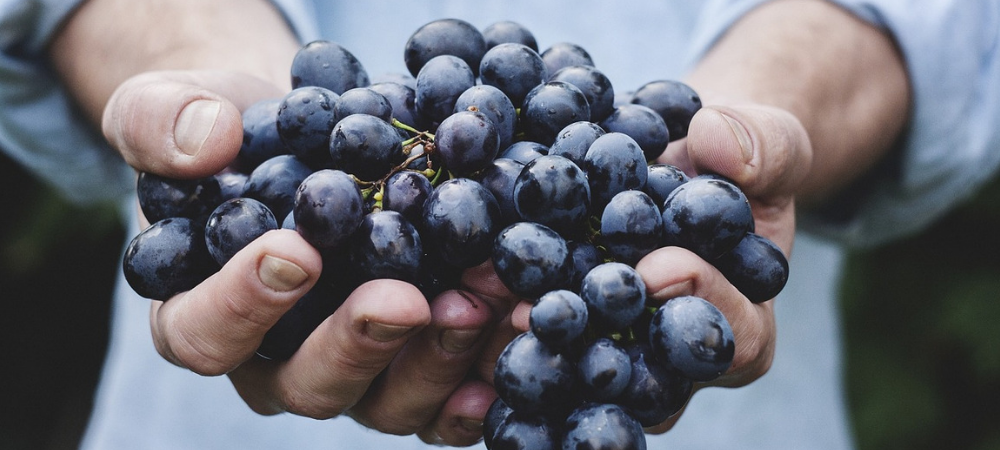Wine is one of the few commercial goods lacking a list of ingredients on the label as for all intents and purposes, it is a pretty natural product. I can hear you say “isn’t there just grape juice, alcohol and water?”. You’re nearly right. After all, grapes naturally contain sugar in the juice and yeast on the skin – all the necessary elements to turn themselves into wine. As nothing HAS to be added, ingredients isn’t really the right word for these, but there are occasionally some added extras that go in, which we will talk about below.
Winemaking in a tiny nutshell

To make wine, grapes are pressed to extract the juice so that it comes into contact with the yeast. This is when fermentation starts and it will continue until all the sugars are converted into alcohol, or at least until the desired level of alcohol is reached. The yeasts will then die naturally and be removed and there will be a varying amount of residual sugar left in the wine. Here’s a little more about the key elements that make up wine and and how they can be manipulated to create various different styles.
Yeasts
Yeasts largely contribute to the flavours of the wine and sometimes, winemakers simply use the natural yeast present on the skins, though this can give varying results and may sometimes be a slow process if there is not much there in the first place. Many others however, choose to use cultured yeasts as they can enhance certain, desired flavour profiles.To do this, right after harvest, winemakers will add some sulphur dioxide to eliminate any indigenous yeast present on this grapes, then inoculate them with the commercial yeast (which is still a natural product) to get the fermentation ball rolling.
Sugar
The level of alcohol in the wine is linked to the amount of sugar present in the grapes before fermentation. The higher the concentration of sugar in the grape, the higher the potential level of alcohol. If fermentation is stopped early, the wine will be lower in alcohol and there will be some sweetness as not all the sugar has been converted into alcohol.
When ‘ingredients’ are added to wine
Cane sugar
Grapes growing in cooler areas (like some regions in France, Austria and Germany) are less exposed to the sun and therefore have a lower sugar concentration than grapes growing in hot, sunny places. If there was very little sun, the wine could end up being weedy and acidic. To combat this, in some cooler regions, the process of ‘chaptalization’ is allowed, where cane sugar is added to the grapes during fermentation. This technique is generally used to boost alcohol levels and body of the wine rather than making it sweeter.
Extra yeasts
Some wines undergo a second fermentation called malolactic fermentation, where the bitter, tart, malic acid naturally present in the grape must is converted into the softer, lactic acid. Like for the first fermentation, this process is triggered by the introduction of special yeasts. The resulting wines are more creamy and balanced. Chardonnay wines especially gain body and a buttery character.
Oak/wood
Depending on the desired style of the wine, fermentation may sometimes happen in oak barrels, and some may simply be matured in oak barrels after fermentation. Technically, this is an ‘ingredient’ as, if the oak is new enough, it will impart some spicy, vanilla characteristics and sometime, a little bit of colour and tannin. If its older oak, it will simply add texture thanks to the micro oxygenation that wood offers. With cheaper wines, oak chips re added to the final wine to impart some flavour quickly as, but these wines tend to taste a little more synthetic.
Clarifying agents
You may be surprised to hear that not all wines are vegetarian or vegan. In a nutshell, wines will be a bit cloudy with sediment after fermentation, so to make them crystal clear, clarifying agents are used. In most cases these days, a clay based substance called bentonite is used, which is obviously vegan and vegetarian friendly. In some slightly old fashioned places however, more traditional clarifying agents such as isinglass (from fish) and albumin (from eggs) are used. The clarifying agents cause the particles to clump together so they can be removed. Everything is then filtered out, but strict vegetarians and vegans prefer for the wines not to have any contact at all with the animal products.
Want to know more about making wine? Why not become a winemaker for a day? Check out our winemaking experience in Tuscany. After discovering their winemaking techniques, you will be able to make your own personalised wine! And if you want to know more about organic and biodynamic wines check out this article.

Want to become a winemaker for a day?
Where to go
We have selected two top wineries in Tuscany where the winemakers will share their daily life with you. After discovering their winemaking techniques, you will be able to make your own personalised wine!
http://www.winerist.com/tours/tuscany/wine-blending-at-fattoria-viticcio-winery
The Fattoria Viticcio is located at the heart of the Chianti Classico area. The winemakers will share their passion and knowledge, you will be able to try their different wines and produce your own wine from 3 different blends..
http://www.winerist.com/tours/tuscany/winemaker-for-a-day-in-siena
If you want to become even more of an insider, this tour in Siena will give you the possibility to learn how to taste and make wine for you to produce your own wine (from the wine to the design of the bottle!) from a selection of 5 different grape varieties.
Tags: Wine, wine education, winemaking, wineries